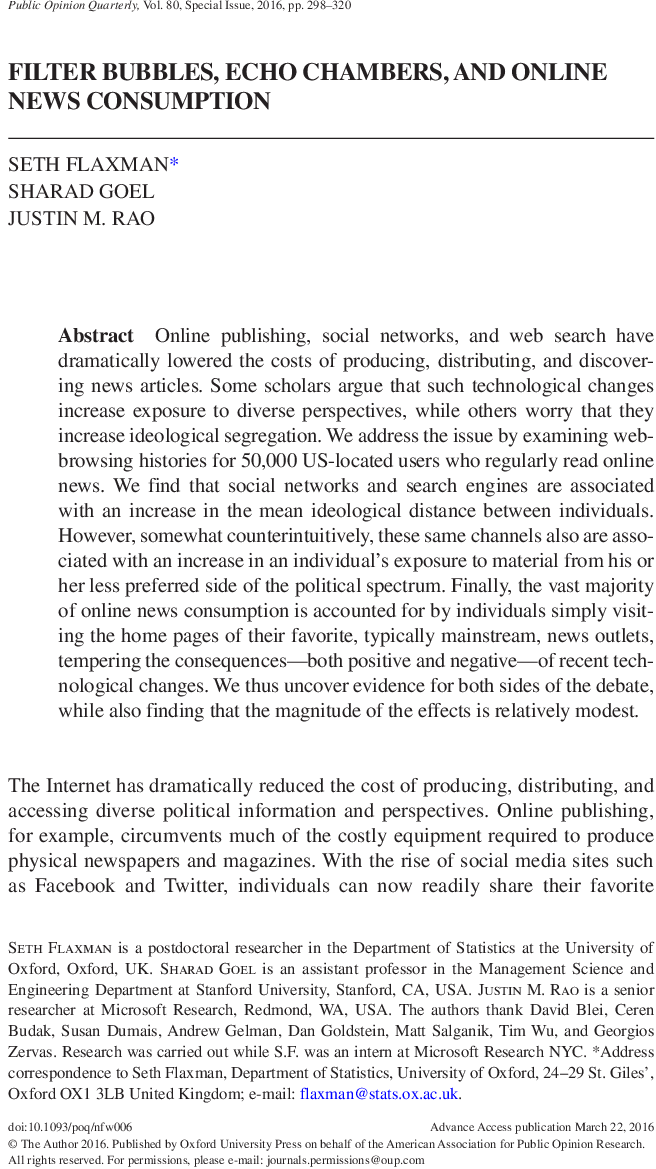☆
0

Authors:
Seth Flaxman,
Sharad Goel,
Justin M. Rao
Liked by:
Domains: Social network
Tags: diversity, news consumption, echo chambers, filter bubbles
Liked by:
Domains: Social network
Tags: diversity, news consumption, echo chambers, filter bubbles
Uploaded by:
Alt-Tab
Upload date: 2019-04-26 15:55:25
Upload date: 2019-04-26 15:55:25


Comments:
Edited by Alt-Tab at 2019-04-26 17:44:19